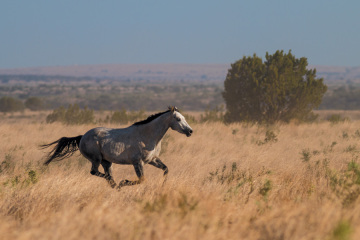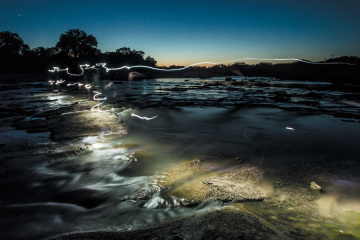Autofocus Vs Continuous Focus for Interviews
This chapter is from the book
3. Autofocus vs. Manual Focus
The majority of lenses being manufactured today are capable of being used in either autofocus or manual focus mode. Canon does not make a single lens for their DSLR cameras that isn't capable of both. This wasn't always the case. Before Canon helped pioneer autofocus systems, it produced all-manual-focus FD lenses. FD lenses are antiques these days, some of which—if kept in good condition—still work well with older all-manual cameras, as well as newer cameras with the help of a mount conversion adapter.
After the development of autofocus, Canon began producing its current line of lenses, known as EF lenses. EF lenses, aside from having a new mount that fits on Canon's EOS system cameras (just think of pretty much any camera Canon makes these days that allows the interchangeability of lenses), can be put into autofocus mode or manual focus mode with the flick of a switch on the lens barrel.
Now, if you are a purist, you might be thinking, "Why would I ever want to shoot in autofocus mode?" To which my reply would be, "Why would you ever want to shoot solely in manual focus mode?" There is value in shooting in both modes, and knowing when to move to one or the other will help capture the image you want without undue frustration with your technology.
Autofocus is a fantastic innovation for camera technology—a paradigm shifter. It allows us to be efficient in shooting and more accurate in many cases. When subject matter is in motion, such as a running horse (Figure 1.6) or football player, autofocus is an innovation I do not like to go without. My "good" shot rate increases in circumstances where auto-focus can be used, as opposed to manually focusing on such subject matter.

Figure 1.6 Continuous autofocus was necessary for me to capture this horse running fast and at an angle that closed the distance between us. Although possible, manually focusing this event would have presented a few more challenges and a lot more missed shots.
ISO 100 • 1/800 sec. • f/5.6 • 400mm
However, there are times when manual focus is indeed your best option. Autofocus in Canon DSLRs works well when there is enough contrast (the difference between light tones) on or between subject matter that the camera is able to detect. There are times when subject matter lacks enough contrast for the autofocus to work properly, leaving you with a lens—and really a camera—searching for focus. Low-light situations, such as dimly lit concerts or nighttime landscapes, come to mind (Figure 1.7). In these instances, flicking the switch on the lens to manual focus puts you in full control of the lens's focal plane.

Figure 1.7 For a timed exposure of some adventurous photography students crossing the Llano River, I set my camera on a tripod and switched my lens to manual focus to maintain a steady shot and to keep the lens from "hunting" focus.
ISO 800 • 30 secs. • f/11 • 17mm
Shooting macro (extreme close-up) photography also benefits greatly from manual focus mode. There is nothing more frustrating to this nature photographer than trying to autofocus on the petals of a flower that is occasionally bumped by a soft breeze. Autofocus will continually search for something to focus on, even if the autofocus mode is turned to One Shot in the camera. This isn't easy on the eyes.
You can also use autofocus and manual focus together to achieve a single image. When shooting landscapes for which you want maximum depth of field, it is often helpful to use autofocus to focus exactly one-third into the scene (more on hyperfocal distance in the next chapter) and then switch to manual to keep the same focal plane when recomposing the frame. I do this when I intend to set up for a while—such as capturing a really large thunderstorm or light painting a structure—and want to make multiple exposures without refocusing for each shot.
In the end, using autofocus or manual focus is based largely on user preference. I am in autofocus 90 percent of the time. Over time, I've become used to the different autofocus modes Canon cameras allow the shooter to use, and I'm extremely comfortable in "AF." However, if manual focus is the wheelhouse in which you find yourself, then use it!
Source: https://www.peachpit.com/articles/article.aspx?p=2264647&seqNum=6
0 Response to "Autofocus Vs Continuous Focus for Interviews"
Post a Comment